https://www.firstpost.com/business/budget-2022-why-provisions-for-agriculture-and-the-poor-are-laughable-with-no-attempt-to-reward-the-efficient-10341031.html
Budget2022
Everyone seems to be smiling, but the strains are visible
RN Bhaskar
The Budget papers have been presented before the Parliament. At the time this article is being written actual numbers for education and health are not available. The education budget saw a 6% reduction last year. Will this year see a surge? Moreover, the only issue on health that is mentioned in the Budget is that the government will pay for vaccination. But health is much more than vaccinations, isn’t it?
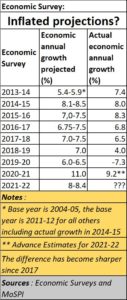 The health infrastructure is pathetic. Without education and health, the Ayushman Bharat concept becomes farcical. And without these two, employability will also remain a big issue. Investing in infrastructure and MSMEs will not solve the problem unless the population becomes productive and employable.
The health infrastructure is pathetic. Without education and health, the Ayushman Bharat concept becomes farcical. And without these two, employability will also remain a big issue. Investing in infrastructure and MSMEs will not solve the problem unless the population becomes productive and employable.
The only mention about health and education is that there will be an additional surcharge to the income tax payable called the “Health and Education, to enable the Government to provide and finance quality health services. But direct tax collections for 2021-22, as on December 16, show that net collections are at ₹ 9.45 lakh crore (compared to ₹ 5.88 lakh crore over the year-ago period). Add to this another Rs.3 lakh crore for annualising this figure and we arrive at Rs.12.5 lakh crore. Now take the fresh levy of 4% and you get Rs.50,000 crore. Is that going to be the incremental amount for education and health? Much of that will go to meet vaccination expenses!
And yes, there is a lot of space devoted to the way the accounts of educational institutions and medical colleges will be audited. Couldn’t the government talk about creating more beds for patients and more seats for doctors and nurses? Incidentally, both nurses and doctors are also exportable talent. And no mention about schools.
But let’s look at the Budget beyond the silence on education and health, and without losing focus on either employability or agriculture which supports more than 50% of India’s population.
Economic Survey
Obviously, one cannot look at the Budget in isolation. It must be viewed against the state of the economy.
The state of the economy is normally viewed against the findings in the Economic Survey. The latest Survey paints a rosy picture. But can it be trusted?
Take the first chart. Previous Economic Surveys have often tried to paint a rosier-than-real picture of the future. This is best borne out by the GDP projections made. GDP projections have always been higher than what turned out to be the actual growth rate. This has been more pronounced since 2017. Will this happen with the projections for 2022-23 as well?
To be fair, the projections look conservative. It is lower than the 9.5% estimated by the RBI. It is lower than the 9 % revised projections of the IMF, and more in line with 8.3% forecast by the World Bank’s Global Economic Prospects report, released on January 11, 2022. But given the past record, will this also be an over-estimate?
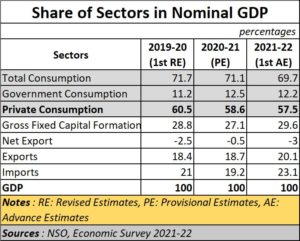 Then there is a second problem, which becomes evident from the second chart.
Then there is a second problem, which becomes evident from the second chart.
As the survey states, when one compares the sector shares in GVA of the provisional estimates for 2020-21 against the first advanced estimates for 2021-22, one finds that the share of agriculture went down by -(minus)1.4% (from 20.2% to 18.8%). The share of industry climbed by 2.3% (from 25.9% to 28.2$). And services dipped by –(minus)0.9% (from 53.9% to 50%).
What this means that two of the largest employers in India performed badly. Agriculture accounts for over 50% of the nation’s population. And services is the next big employer, and contributes to over 55% of the country’s GDP. When such large segments suffer, there is something seriously wrong. The smiles on rhe faces of those who carried the budget papers begin to look pasted on.
In a way that is what Sanjiv Mehta, President, Federation of Indian Chambers of Commerce & Industry (FICCI) (https://www.cnbctv18.com/retail/rural-growth-not-in-top-gear-but-still-robust-says-ficci-president-sanjiv-mehta-11899122.htm/amp) means when he says that “When rural slows down, it does become an area of concern.” He explains that the per capita consumption in FMCG for instance in rural India is less than half of that of the national average. He should know, since he also heads Hindustan Unilever.
The farmer betrayed
You need to increase rural purchasing power. That in turn will move the wheels of industry and commerce. But that requires fair prices for agri-produce. Fair prices come from fair markets, and market support. Instead, the government has gone about promoting exploitation in farmlands. Thus, the already rich, and politically well-connected, will benefit. The rest will not. Look at the way, just last week, the government just dismissed the autonomy of NDDB (https://timesofindia.indiatimes.com/city/vadodara/centre-to-have-final-say-in-nddb-affairs/articleshow/89233524.cms), the vehicle that Verghese Kurien created for promoting milk cooperatives and stabilising milk prices. In turn, NDDB helped India become the world’s largest milk producer. The the farmer who produced milk in Kurien’s cooperatives had cause for a big smile.
Kurien ensured that the farmer gets 80% (or more) of the market price of milk. He thus changed the global model, which allowed the farmer to get one-third, the processor to get a third, and the procurement/marketing agencies to picket the remaining third. Kurien ensured that milk prices did not fall, unlike other agri commodities in India. He also ensured that this was done without any subsidy from the government. Now by abolishing the autonomy that NDDB enjoyed, the government wants to introduce subsidies in in a healthy sector like milk as well? Why wreck a model that has stood the test of time for over seven decades?
The NDDB episode makes it abundantly clear that the government does not really have farmer welfare in mind. Cooperatives represent a huge vote-bank and large cash reserves. The government wants control of that. The farmers are mere collateral. It is quite possible that NDDB – through Mother Dairy – will now be compelled to purchase milk from middlemen. NDDB was created to promote milk cooperatives, not to promote middlemen who exploit farmers (https://asiaconverge.com/2021/08/poverty-in-uttar-pradesh-and-bihar-is-not-accidental/).
But promoting middlemen is what Uttar Pradesh does – it is a BJP ruled state. To finance the election machine, the government might want to promote middlemen, and those who are inclined towards politicians. UP, incidentally, pays farmers the lowest price per litre of milk.
Other examples of contempt for the farmer are evident in the way the government imports edible oil (https://asiaconverge.com/2022/01/the-government-lets-down-indias-edible-oil-industry/). It has done this with pulses as well (https://www.firstpost.com/business/how-to-protect-indias-agriculture-sector-from-over-zealous-govt-functionaries-3435752.html). It has changed stocking limits for agri commodities, banned commodity trading in specific commodities, all of which hurt the farmer, and protect speculators.
Did someone say atma nirbharta?
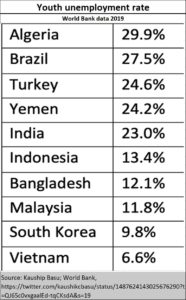 Unless this approach changes, expect big trouble on the farm front. The farmer agitation was the first sign of discontent (https://asiaconverge.com/2021/09/need-sensible-laws-to-stop-farmer-exploitation/).
Unless this approach changes, expect big trouble on the farm front. The farmer agitation was the first sign of discontent (https://asiaconverge.com/2021/09/need-sensible-laws-to-stop-farmer-exploitation/).
When rural distress is combined with unemployment, the country faces a huge problem.
The government’s love for subsidies and doles, often to win votes, runs contrary to atma nirbhar Bharat. The fact is that subsidies strengthen the inefficient and corrupt, and penalise the efficient. Efficiency is tested at such times. That is why, the budgetary provisions for agriculture and the poor become laughable, if there is no attempt to reward the meritorious and the efficient.
Without education and healthcare, future job creation will become increasingly difficult. Already India’s unemployment levels are among the highest in the world. As Kaushik Basu points out in a Tweet, “India’s youth deserves better than this. This one chart tells you what the Budget must focus on” (https://twitter.com/kaushikcbasu/status/1487624143025676290?t=QJ65c0vxgaalEd-tqCKsdA&s=19). Unfortunately, he, like millions of Indians will be disappointed that the Budget didn’t even bother to address their





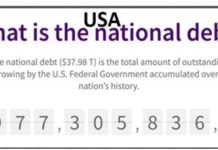























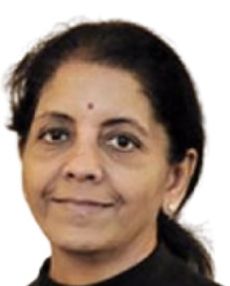












COMMENTS